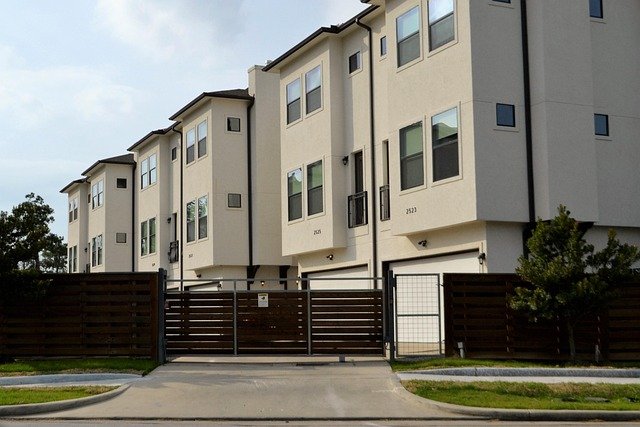Micro-Unit Developments: Reshaping Urban Living Spaces
Introduction: In the ever-evolving landscape of real estate, a new trend is making waves in urban centers across the globe. Micro-unit developments, compact living spaces typically under 400 square feet, are emerging as a innovative solution to housing shortages and affordability concerns in major cities. This shift towards smaller, more efficient living spaces is not just changing the physical landscape of our cities, but also redefining the concept of home for a new generation of urban dwellers.

Design Innovations: Making the Most of Limited Space
One of the most fascinating aspects of micro-unit developments is the ingenious design solutions employed to make these small spaces livable and even luxurious. Architects and interior designers are pushing the boundaries of spatial efficiency, creating homes that feel much larger than their actual square footage. Foldable furniture, hidden storage compartments, and convertible spaces are just a few of the tricks used to transform these tiny apartments into functional homes. Some developments even incorporate shared amenities like communal kitchens, lounges, and workspaces to extend the living area beyond the individual unit.
The Target Market: Who’s Embracing Micro-Living?
Micro-units are particularly appealing to certain demographics. Young professionals, often priced out of larger apartments in city centers, are drawn to these spaces for their affordability and prime locations. Students and recent graduates also find micro-units attractive, as they offer independence without the high costs associated with traditional urban apartments. Interestingly, some empty nesters and retirees are also gravitating towards micro-units, downsizing from larger homes to enjoy a more streamlined, urban lifestyle.
Economic Implications: A New Frontier for Investors and Developers
From an investment perspective, micro-unit developments present an intriguing opportunity. With land prices in urban areas at a premium, developers can maximize their returns by fitting more units into a single building. This density can translate to higher rental yields compared to traditional apartment buildings. However, the economics aren’t always straightforward. Construction costs for micro-units can be higher per square foot due to the need for high-end finishes and smart design solutions to make the spaces livable. Additionally, local zoning laws and building codes may need to be navigated, as not all cities have regulations in place to accommodate this new housing type.
Challenges and Criticisms: Are Micro-Units a Sustainable Solution?
While micro-units offer numerous benefits, they’re not without their critics. Some argue that these developments contribute to the further densification of already crowded urban areas, potentially straining local infrastructure and services. There are also concerns about the long-term livability of such small spaces, with some questioning whether micro-units are a sustainable housing solution or merely a stopgap measure in the face of housing shortages. Mental health experts have raised questions about the psychological impact of living in such confined spaces, particularly in light of recent global events that have highlighted the importance of comfortable living environments.
The Future of Micro-Units: Evolving with Urban Needs
As cities continue to grapple with housing affordability and space constraints, the role of micro-units in the urban landscape is likely to grow. However, their future evolution may see some interesting developments. We may see an increase in flexible micro-unit designs that can be combined or reconfigured as residents’ needs change. There’s also potential for micro-units to be integrated into mixed-use developments, creating diverse, vibrant communities that blend residential, commercial, and recreational spaces.
Regulatory Landscape: Adapting to New Housing Models
The rise of micro-units has prompted many cities to reexamine their housing regulations. Minimum square footage requirements, parking mandates, and other zoning laws are being reassessed to accommodate this new form of housing. Some cities have embraced micro-units, seeing them as a way to increase housing stock without extensive new construction. Others have been more cautious, implementing pilot programs to study the impact of these developments before making sweeping changes to housing policies. As micro-units become more prevalent, we can expect to see a more standardized regulatory approach emerge across different urban centers.
Technology’s Role in Micro-Living
Technology is playing a crucial role in making micro-unit living not just feasible, but desirable. Smart home systems allow residents to control lighting, temperature, and even furniture arrangements with the touch of a button or a voice command. Virtual reality tours are helping potential renters or buyers visualize the space and its potential before making a commitment. As technology continues to advance, we can expect to see even more innovative solutions that enhance the micro-living experience, from AI-powered space optimization to augmented reality interior design tools.
In conclusion, micro-unit developments represent a fascinating shift in urban living paradigms. They offer a creative solution to housing challenges in major cities, catering to changing demographics and evolving lifestyle preferences. While not without their challenges, these compact living spaces are reshaping our understanding of what constitutes a home in the 21st-century city. As this trend continues to evolve, it will be crucial for real estate professionals, urban planners, and policymakers to work together to ensure that micro-units contribute positively to the urban fabric, offering sustainable, affordable, and livable housing options for city dwellers.





